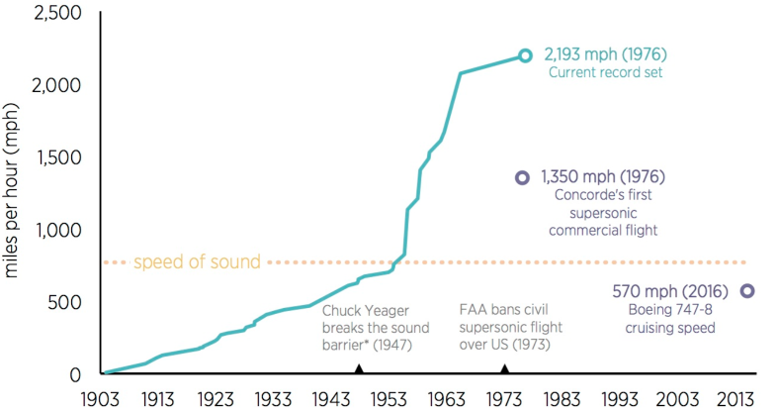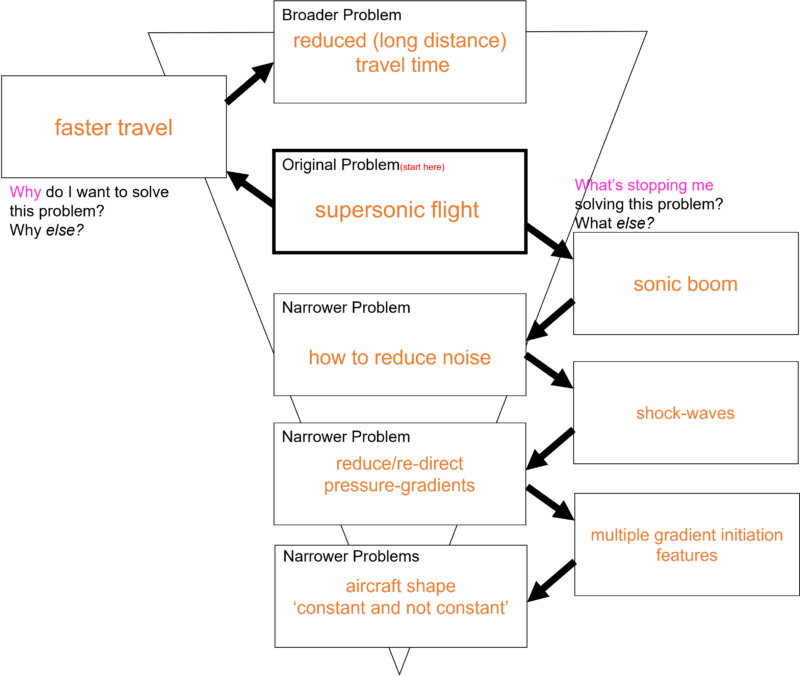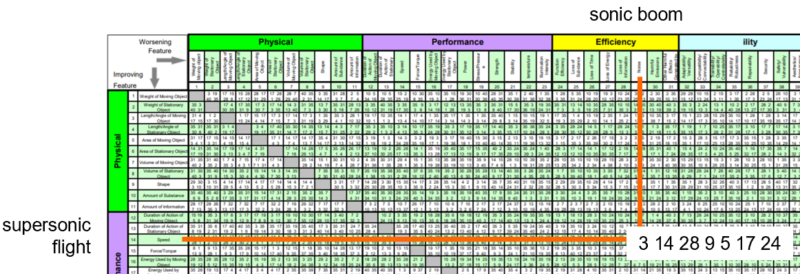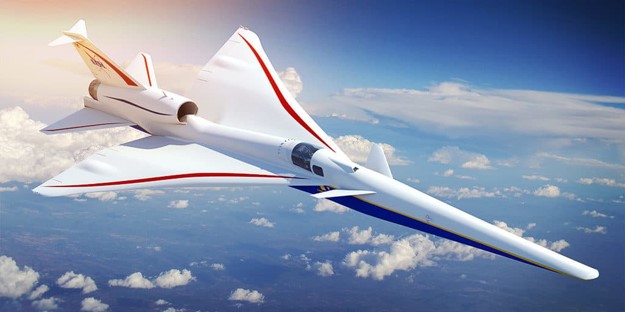
It seems strange to say it, but the speed record for atmospheric flight hasn’t changed since 1976. The speed-versus-date graph shows a pretty good approximation of an s-curve. Which should tell aircraft designers that there’s a contradiction to be solved. Actually several. Aircraft designers, even though they tend not to possess a lot of TRIZ awareness, almost invariably have the luxury of having plenty of time to think about problems. In theory, this means that they will get there in the end. If they had known TRIZ, meanwhile, they might have conducted a root-contradiction analysis. Something like this:

At the root contradiction level, as has been known by designers for some time, any big variation in shape on the body of the plane, like the cockpit jutting up at the front or the tail sticking up at the back of the plane, will produce a shockwave. To minimise the shockwaves that travel down to the ground, you need to change the shape of the plane and make it far more streamlined, smoothing out the variations in shape and spreading them out across a much longer body.
At its surface level, though, the speed contradiction is all about sonic boom. And the fact that, when an aircraft flies supersonically over urban areas, it is likely to cause a fair few broken windows and phone-calls from citizens thinking the world is ending. Here’s how this speed versus noise problem is mapped onto the Contradiction Matrix:

From this list, Principle 17, Another Dimension forms the most immediately visible feature of NASA’s current X59 project. The plane is 99 feet, 7 inches long, roughly a third of which is an extended, flattened-tip nose leading as seamlessly as possible back to the swept-back wings and a single engine at the rear.

Look a little closer and we can see another example of Principle 17 in action: The engine intake and exhaust, both of which are traditionally housed on the underside of the plane, have now been shifted to the upperside. Through this geometry shift, the wing blocks and prevents the exhaust from interacting with the shock waves on the bottom of the aircraft.
Zoom in further still and we see all the necessary (Principle 3, Local Quality) geometric features positioned in such a manner that the shock waves each one instigates are kept parallel and separated from each other, so they don’t combine into a loud sonic boom:

The X59 is scheduled to fly for the first time next year with these Principle 3 and 17 features incorporated. The theoretical modelling seems to suggest that the sonic boom power levels will be reduced by a factor of somewhere between 8 and 10, making the traditional ‘boom’ into a less intrusive ‘thump’. Time will tell whether society says this will be good enough. If it isn’t, my Contradiction-Matrix influenced bet is that the designers will need to get beyond geometry and start thinking about Principles 28 and 9. You heard it here first. No pun intended.
